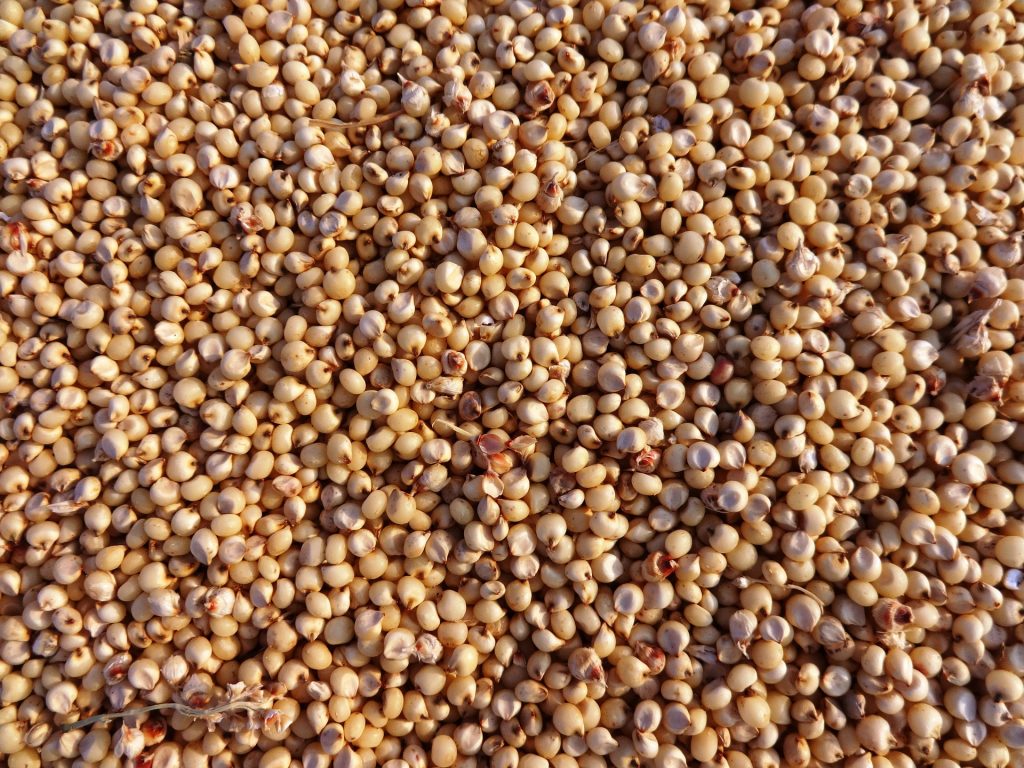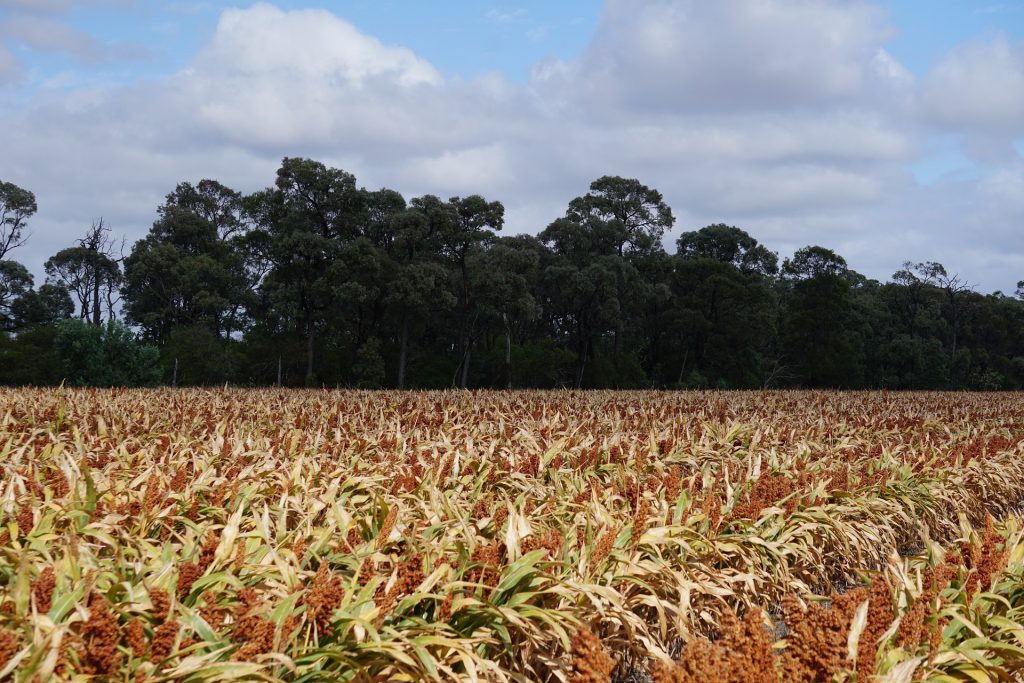Sorghum is another grain you can include to add variety to your meals! It is an ancient grain that is native to Africa. Also, it is drought- and heat-resistant And a staple in many parts of the world.

Why Eat Sorghum?
- People typically eat sorghum as a whole grain, with all of the outer layers intact. It is an excellent source of fiber and a good source of many vitamins and minerals.
- Sorghum is gluten-free, so it is a great choice for those with celiac disease or gluten sensitivity.
- Sorghum is drought-tolerant, making it more environmentally-friendly.
Varieties

There are many varieties of sorghum, and they come in a variety of colors such, as white, dark red, purple, and brown. Typically, the white and cream varieties are made into flour. Dark purple, red, and brown varieties are especially high in antioxidants and other healthy plant compounds.
How Do I Use Sorghum?
- Try boiling whole sorghum to enjoy as a porridge or in salads, pilafs, or soups.
- Experiment with sorghum flour in baked goods. It does not have gluten, so you may need to add a binder such as xanthan gum.
- Make popped sorghum. It is just like popcorn, but smaller.
Sorghum has a neutral flavor that is great for a variety of dishes. Look for this ancient grain the next time you grocery shop!
Did You Know?
You can pop sorghum, just like popcorn! Pop it on the stovetop, in a popcorn popper, or even in a paper bag in the microwave.
Soaking sorghum can improve the bioavailability – the amount we can absorb – of zinc and iron.
Other uses for sorghum include animal feed, ethanol production, brewed alcoholic beverages, and sorghum syrup.


